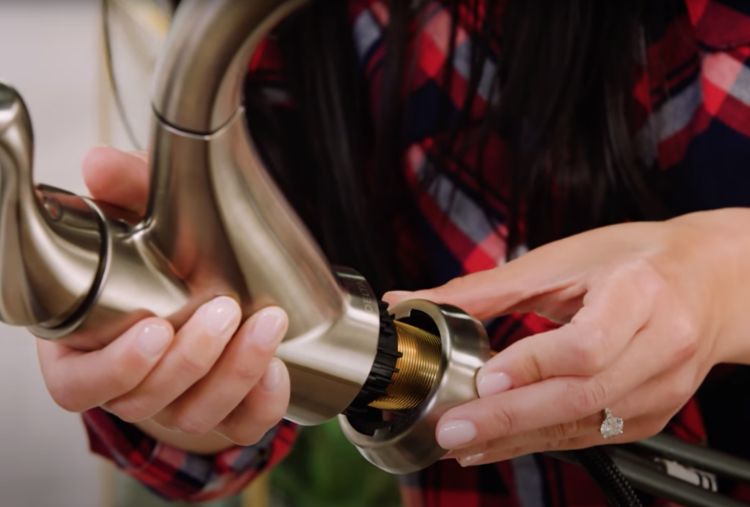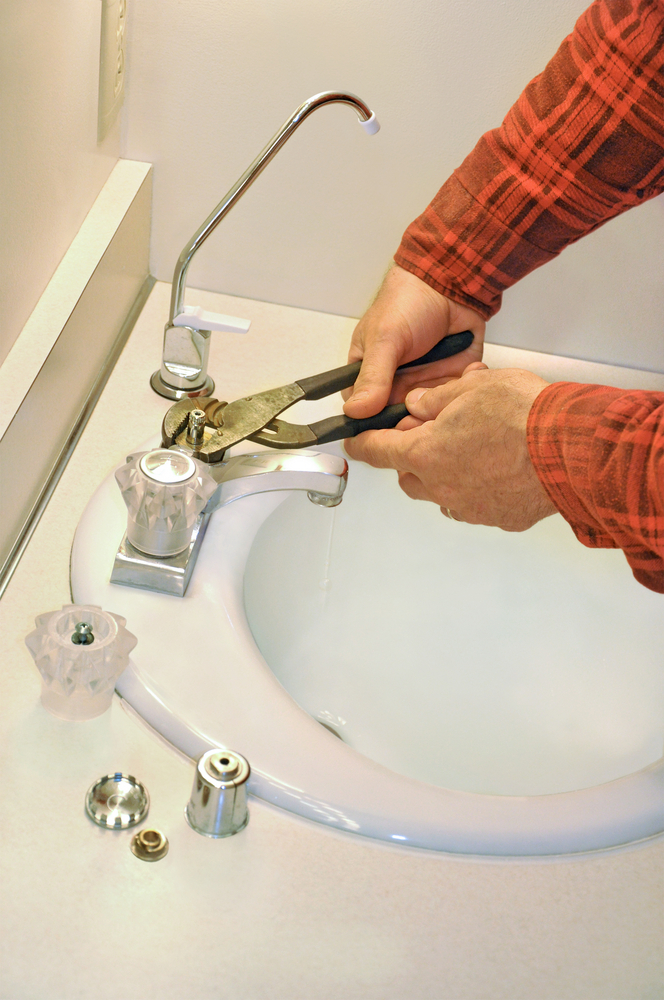Understanding the Significance of Resolving a Faulty Faucet
Understanding the Significance of Resolving a Faulty Faucet
Blog Article
This great article directly below relating to Why It's Important to Fix Leaky Faucets is exceedingly stimulating. Check it out for your own benefit and see what you think about it.

Trickling taps might look like a small trouble, yet their impact goes beyond just the aggravation of the audio. From drainage to sustaining unneeded financial costs and health risks, ignoring a dripping faucet can lead to various consequences. In this write-up, we'll look into why it's essential to address this usual family problem quickly and efficiently.
Wastage of Water
Ecological Effect
Leaking faucets add substantially to water wastage. According to the Epa (EPA), a solitary faucet trickling at one drip per secondly can waste greater than 3,000 gallons of water annually. This not just stress water sources however additionally impacts communities and wild animals based on them.
Step-by-Step Overview to Taking Care Of a Dripping Tap
Tools Called for
Before attempting to deal with a dripping faucet, collect the required tools, consisting of a flexible wrench, screwdrivers, substitute components (such as washers or cartridges), and plumber's tape.
Usual Tap Issues and Their Solutions
Identify the type of faucet and the particular problem triggering the drip. Usual troubles consist of damaged washing machines, rusty shutoff seats, or damaged O-rings. Describe supplier directions or on-line tutorials for step-by-step advice on repair services.
Financial Prices
Boosted Water Expenses
Beyond the environmental influence, dripping taps can blow up water costs considerably. The built up waste gradually converts into greater utility expenses, which can have been prevented with prompt repair services.
Potential Residential Property Damages
Furthermore, prolonged trickling can cause damage to fixtures and surfaces surrounding the faucet. Water accumulation can cause discoloration, deterioration, and also structural issues if left neglected, causing extra repair work costs.
Wellness Worries
Mold and Mold Development
The constant visibility of wetness from a dripping tap develops a suitable atmosphere for mold and mildew and mildew development. These fungi not just compromise interior air quality however also present health dangers, specifically for people with respiratory system conditions or allergies.
Waterborne Conditions
Stagnant water in dripping faucets can come to be a breeding place for bacteria and other microorganisms, raising the threat of waterborne diseases. Contaminants such as Legionella microorganisms grow in stationary water, possibly leading to severe diseases when consumed or breathed in.
DIY vs. Specialist Repair work
Advantages and disadvantages of Do It Yourself Repair Service
While some may try to fix a trickling tap themselves, DIY repair services come with their very own set of difficulties. Without correct understanding and devices, do it yourself attempts can aggravate the issue or cause insufficient fixings, prolonging the problem.
Advantages of Hiring a Specialist Plumber
Working with a professional plumber makes sure that the underlying source of the dripping faucet is dealt with successfully. Plumbers possess the knowledge and devices to identify and repair faucet concerns effectively, conserving time and lessening the danger of further damage.
Ecological Duty
Private Contribution to Conservation
Taking duty for dealing with leaking faucets straightens with wider efforts toward water conservation and ecological sustainability. Every individual's activities collectively make a significant influence on preserving priceless resources.
Lasting Living Practices
By prioritizing punctual repair work and taking on water-saving practices, people contribute to sustainable living practices that profit both existing and future generations.
Preventive Measures
Routine Upkeep Tips
To prevent leaking taps, perform routine maintenance such as cleansing aerators, inspecting for leaks, and replacing worn-out components promptly. Furthermore, think about setting up water-saving tools or updating to extra reliable components.
Importance of Prompt Repairs
Addressing dripping faucets as soon as they're discovered protects against more water wastage and potential damage, ultimately saving both water and money in the long run.
Impact on Building Worth
Assumption of Well-Maintained Building
Keeping a residential or commercial property in good condition, including resolving upkeep problems like dripping taps, enhances its regarded value and desirability amongst prospective buyers or lessees.
Impact on Resale Value
Properties with properly maintained plumbing fixtures, consisting of taps, command greater resale values in the real estate market. Attending to dripping taps can contribute to a favorable impression throughout home examinations and settlements.
Verdict
Addressing a leaking tap goes beyond simple ease; it's an important step towards preserving water, minimizing economic costs, and protecting wellness and residential property. Whether via DIY repair services or specialist aid, taking action to repair leaking faucets is a little yet impactful method to promote accountable stewardship of resources and contribute to a healthier, much more sustainable future.
How to Fix a Dripping or Leaky Faucet
A leaking faucet is one of the most common problems that homeowners encounter, but it being commonplace doesn’t make it any less annoying. The constant drip drip drip of a leaking bathtub faucet, showerhead, or sink tap can disturb your home’s serenity. Left neglected, a dripping faucet can also result in higher water bills and discoloration or mold growth in your sink or plumbing fixtures.
Fortunately, you don’t have to be a trained plumber to know how to stop a dripping faucet. With some basic tools, replacement parts, and a little patience, leaky faucet repair is a breeze. In this article, we’ll explain what causes dripping faucets and how you can fix them.
What Causes a Leaking Faucet?
Kitchen and bathroom faucets come in all manner of designs, but most involve some combination of valves, O-rings, seals, and washers. The O-ring is usually the weakest link, but any one of these pieces can wear down over time. Heat, moisture, temperature fluctuations, minerals, mold, and movement can contribute to warping and corrosion, breaking the watertight seal. This just comes with the territory of being a homeowner. Everything is always subject to wear and tear, and some component parts of your appliances and fixtures need to be replaced on occasion. At least replacement O-rings are cheap!
More rarely, dripping faucets can be a symptom of excessively high water pressure. Were this the case in your home, you would probably notice that the leak is not isolated to one faucet. Water pressure issues are harder to resolve on your own. We recommend contacting a professional plumber if you suspect your water pressure is too high.
How to Fix a Dripping Faucet
Pipe wrench or monkey wrench Allen wrench set Screwdrivers Old towel or rag Shut off the water.
Before you do anything, you need to turn off the water to keep from drenching your kitchen or bathroom. You should find a valve under the sink and against the wall. Once you’ve turned this valve, try turning the faucet on to confirm that the water source has been cut off.
If you can’t locate your local valve for the faucet you’re working on, you can always shut off the water to the house at the main valve. Of course, this will prohibit anyone from using the sinks, showers, or toilets while you’re working on the faucet that’s giving you trouble.
Plug or block the drain.
You’ll be disassembling the faucet and removing some small bits of hardware. Plug the drain with a stopper or rag to avoid the possibility of a small screw falling into your P-trap.
Take apart the faucet assembly.
There are several varieties of kitchen and bathroom faucets, each with its own manner of assembly. For detailed instructions on how to disassemble your faucet, you can refer to the fixture’s manual or contact the manufacturer. If you know whether you have a ball, disc, cartridge, or compression faucet, you can find detailed schematics online.
In general, you need to begin by removing the faucet handles. You might notice a small screw that you’ll need to remove with a screwdriver or Allen wrench. If you don’t see any visible securing hardware, it’s likely hidden under a decorative cap that can be unscrewed or popped off with flathead screwdriver.
Remove each piece methodically, consulting a schematic when necessary. Take notes or arrange the pieces in such a way to make it easier to correctly reassemble the faucet later.
Remove the cartridge.
Once you’ve removed the handles and securing hardware, you should be able to remove the valve cartridge or stem. Some cartridges will slide right out. Other faucet models will require you to loosen a nut with a pipe wrench before you can remove the valve stem.
Examine the exposed hardware.
With the cartridge or stem removed, inspect the component parts. Check the rubber O-rings for wear and tear. Also examine the seat washer for corrosion or other damage. These pieces are usually the responsible parties for a dripping faucet, but it’s worth inspecting the other component parts while you have the faucet disassembled.
Find replacement parts.
Once you’ve identified which faucet component has failed, find an identical replacement. Your local hardware store should have O-rings, seat washers, and other standard components in stock. If you have a luxury or uncommon faucet, you may have to contact the manufacturer for a replacement part.
It’s a good idea to take your old parts with you to the hardware store so you can compare them with the store’s inventory and be sure you’re purchasing the correct replacement.
Reassemble the faucet.
With your new parts in hand, reconstruct the faucet and handles. Don’t be tempted to overtighten screws or nuts. You might think this could create a better seal, but it can instead damage or bend a delicate part of the assembly and create a new problem for you.
Turn on the water and test the faucet.
The only thing left to do is test your work. Unplug the sink, turn the water back on, and try the faucet. Congratulate yourself on a job well done!
https://www.libertyhomeguard.com/how-to-fix-a-dripping-or-leaky-faucet/

Do you appreciate reading up on 4 Common Reasons for a Leaky Faucet? Give feedback down below. We would be delighted to listen to your views about this page. In hopes to see you back again in the near future. Feel free to take the opportunity to promote this page if you enjoyed it. Many thanks for your time spent reading it.
Report this page